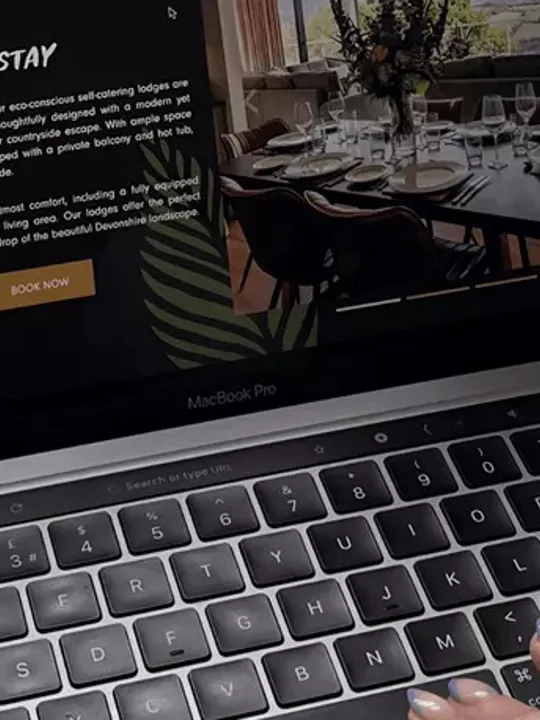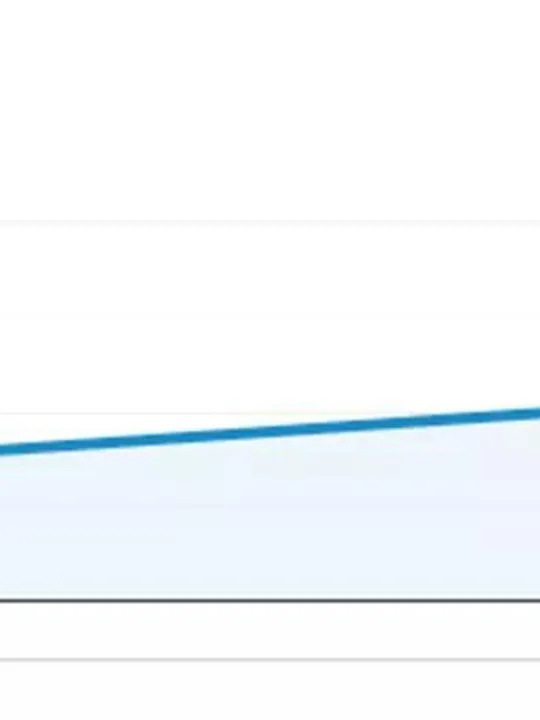5 Tips For Improving Website Conversion Rate
What is website conversion rate?
The conversion on a website refers to when a website visitor completes a desired action on your website.
For example, filling out a booking form, purchasing something or contacting you directly through the correct channels. Your website conversion rate refers to the amount of website visitors that do actually complete the desired action from the overall percentage of website visitors.
Website conversion can be broken down into:
Micro-conversions: when a step toward your end goal is completed. For example, a website visitor watches a tutorial video or signs up to your newsletter, engaging with your brand and showing their interest.
Macro-conversion: A macro-conversion is when your end goal has been completed, such as a sale, a booking form is complete, etc.
At Cab Hospitality, we understand the complexities of improving a website conversion rate, the importance of streamlined processes, and where to concentrate attention in order to give your hotel or restaurant the best chance at improving your website’s conversion rate. With over 30 years of industry experience, trust us to help support your hotel or restaurant with how to increase your conversion rate.

Improve website speed
Improving website speed is critical for optimising your website's conversion rate. Website speed is the time it takes for your website to load fully and it can significantly impact user experience and engagement. Slow website speed can lead to a higher bounce rate, decreased user satisfaction, and ultimately lower conversion rates.
In order to improve your site speed, there are a variety of criteria you can implement, such as:
Optimise images
Minimise HTTP requests
Use a CDN Content Delivery Network)
Reduce server response time
To check your site speed and identify areas where you can improve, you can learn more here.
Ensure your website is mobile friendly
Having a mobile-friendly website is crucial for businesses today. Mobile devices account for over half of all website traffic globally, and the number of mobile users is increasing every day. 52.5% of all web traffic comes from a mobile device, which means your website needs to be optimised for mobile users to convert the most traffic. A mobile-friendly website is one that is designed to provide an optimal user experience on a desktop or laptop, as well as a mobile device, such as a smartphone or tablet. If you’re unsure of how to check your site speed for mobile optimisation, you can review it here.
A properly optimised, mobile-friendly website will provide consumers with:
IMPROVED USER EXPERIENCE
Mobile friendly websites are designed to be easy to navigate on smaller screens and with touch based interfaces for more simple, quicker and sleeker use. Mobile friendly websites often have simplified layouts, larger buttons and faster load times, which can improve the overall user experience and give your website the best opportunity at converting.
HIGHER SEARCH ENGINE RANKINGS
Google has awarded a priority to mobile friendly websites in its search results since its update in 2015. Having a mobile friendly website can exponentially help to improve your website's search engine rankings, leading to more traffic and potential customers.
INCREASED ENGAGEMENT
Mobile users tend to spend more time on websites that are mobile friendly and they are more likely to return to a website if they have a positive experience on their first visit. Nearly 70% of consumers admit that page speed impacts their willingness to buy from an online retailer, which could be a major issue and a big indicator toward low conversion rates.
WIDER REACH
With more than 50% of the entire web traffic coming from mobile devices, having a website that isn’t mobile friendly is cutting back a lot of opportunities to engage with the widest net of audiences. Whatsmore, a mobile friendly website allows your business to reach a wider audience, including people who primarily use mobile devices to browse the internet. By having a mobile friendly website, you can tap into this growing segment of the market and expand your reach and customer base.
COMPETITIVE ADVANTAGE
In today's digital world, having a mobile friendly website is no longer a nice-to-have, it's an absolute must-have. If your competitors have mobile friendly websites and you don't, you risk losing potential customers to them.

Use high-quality images and videos
Using high quality pictures and videos on your website can have a significant impact on the user experience and overall success of your website. Here are some reasons why using high-quality pictures and videos is important:
IMPROVED USER EXPERIENCE
High quality pictures and videos can enhance the user experience by providing a visually appealing and engaging environment. They can make your website more inviting and keep visitors engaged for longer periods. 91% of consumers prefer visual content to written content also, highlighting the significance of using good visuals to capture and retain audiences.
INCREASED ENGAGEMENT
Pictures and videos can help capture the attention of your visitors, making them more likely to stay on your website for longer periods. This increased engagement can lead to a higher conversion rate and a better overall user experience. Additionally, people's ability to remember information after three days goes up from 10% in the case of text alone, and to 65% when the content is paired with an image.
IMPROVED CREDIBILITY
High quality pictures demonstrate the quality of your products or services and help to establish a relationship and build trust with your visitors.
BETTER SEO
Search engines such as Google use image and video quality as a notable ranking factor for how well your website performs in search engine results pages. Using high-quality pictures and videos can help improve your website's SEO and ultimately improve your website's visibility in search results.
COMPETITIVE ADVANTAGE
If your competitors are using low-quality visuals, using high quality pictures and videos can help differentiate your brand and make your website stand out from the crowd.
UGC IMAGERY
User generated content (UGC) imagery has also proven to be more trustworthy amongst consumers, with research suggesting that UGC imagery can lead to 20 - 39% more users to click through the following steps in the funnel. Therefore, using good quality UGC can help to strengthen your brand’s image, the trust consumers have in your brand, and the amount of clicks you receive.

Offer social proof
Social proof is a phenomenon where people view a behaviour as more ‘correct’ simply because other people are doing it already. In fact, research suggests that 92% of people will more likely trust a recommendation from a peer, and 70% will trust a recommendation from a complete stranger. Therefore, potential customers are more likely to believe the opinion of fellow consumers than the word of a brand or company.
Reviews and testimonials are a great way to showcase your brand’s past and positive experiences of existing customers, offering new customers or website visitors an authentic touch point to refer to the experiences of previous customers. This can lead to an increase in trust with your brand and prompt consumers to complete their conversion as a direct result of other consumer’s positive experiences.
Streamline the conversion funnel
Streamlining the conversion funnel refers to the process of optimising the user experience to encourage more visitors to complete a desired action, such as making a purchase or filling out a booking form on a website. The conversion funnel typically starts with the landing page and ends with the completion of the desired action, such as making a reservation, inquiring, or booking a room.
Some ways to simplify the conversion funnel and increase conversions include the below:
SIMPLIFY THE LANDING PAGE
The landing page is the first impression that a visitor has of your website, so it's important to make it count. Keep the landing page simple and uncluttered, with a clear call-to-action that guides visitors towards the next step in the conversion funnel.
MAKE THE CHECKOUT PROCESS EASY
If your website involves making a reservation or booking a room, it's essential to make the checkout process as simple and easy as possible. This includes minimising the number of steps required to complete the booking, reducing the amount of information that needs to be entered, and ensuring that the checkout process is mobile-friendly.
Moreover, 3rd party booking systems that are used by restaurants and hotels are effective in delivering a streamlined process that is simple, effective, and collects all the relevant information.
What is a good conversion rate for hotels?
For an independent hotel business, the average website conversion rate is around 0.5%, meaning anything above this is a positive conversion rate for hotels.
The booking engine average conversion rate of independent hotels is around 3%, indicating that a conversion rate of 3% or above is positive.
What is a good conversion rate for restaurants?
A conversion rate of anything more than 4.1% would place a restaurant in the top 20% of businesses selling food and drink, and more than 6.2% would put you in the best 10%. So, as a rule of thumb, anything above 4% is positive.
How is the conversion rate calculated?
Conversion rates are a percentage used to evaluate performance of website traffic, marketing campaigns and conversions. To accurately calculate a conversion rate, take the number of conversions divided by the total number of website sessions then times by 100. For example, if your site receives 200 visitors in a month and achieves 50 sales, the conversion rate would be 50 divided by 200 then times by 100, equaling 25%.
We can help
At Cab Hospitality, we have over 30 years of industry experience, a specialist team knowledgeable in all areas of hospitality marketing, and the knowledge and skill to improve your website conversion rate.
When you work with us we will develop a thorough strategy to optimise conversion rates and give your hospitality business the best chance at driving traffic through the conversion tunnel to lead to an increase in direct bookings and revenue.
Get in touch to discuss further.